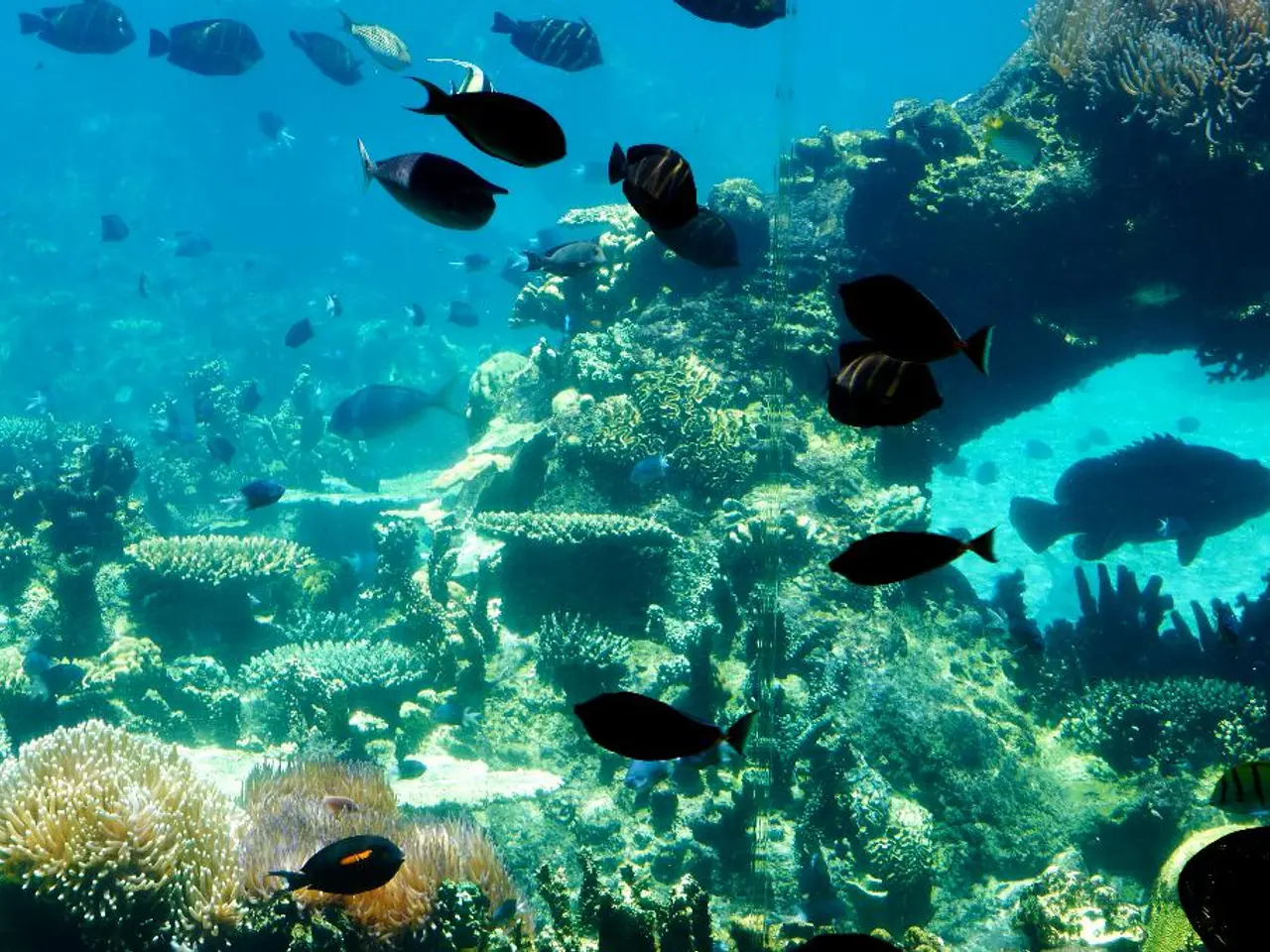Unveil the Fascinating World of Aquatic Life via Local Rivers: 7 Approaches to Inspire Astonishment
River ecosystems are a treasure trove of biodiversity and natural beauty, offering countless opportunities for exploration and study. Here's a comprehensive guide to common activities for understanding and preserving these vital waterways.
Biological Monitoring, Water Quality Testing, Species Identification, and Ecological Surveys
The first step in studying river ecosystems is biological monitoring, water quality testing, species identification, and ecological surveys. These activities help us understand the health of our waterways and the creatures that call them home.
- Collecting and identifying aquatic macroinvertebrates, or "waterbugs," is a hands-on activity that assesses pollution levels and ecosystem health. Programs like Waterwatch often incorporate this practice.
- Physical and chemical water testing measures parameters such as pH, turbidity, dissolved oxygen, and pollutants to evaluate water quality. Portable scientific equipment is essential for this task.
- Studying local amphibians, like frogs, helps us understand their calls, life cycles, and roles as bioindicators of ecosystem health. This is a great way to engage students and citizen scientists in river ecology.
- Using Environmental DNA (eDNA) analysis can detect the presence of native and rare species, enabling biodiversity assessments without requiring physical capture of organisms.
- Exploring food web connections and habitat characteristics through observations and experiments, such as seining or soil testing in wetlands adjacent to rivers, enhances our understanding of the ecological dynamics in the river ecosystem.
Monitoring River Ecosystems
Monitoring the metabolic activity of river ecosystems, such as measuring gross primary production (GPP) and ecosystem respiration (ER), helps classify river metabolic regimes and reveal ecological rhythms.
Observing seasonal migrations, like fish species moving upstream to spawn, dramatic courtship displays, and territorial behaviors, provides insights into the river's life cycle.
Conservation Practices
Practicing catch and release methods is crucial for conservation. Using barbless hooks or crimp down barbs reduces injury, and minimizing air exposure to less than 30 seconds during catch and release lessens stress on fish populations.
Photographing the same river sections monthly tracks vegetation changes and species populations, while monitoring water temperature changes influences feeding behavior. Supporting fish horizontally with wet hands and using circle hooks reduce deep hooking incidents.
Documenting and Sharing Findings
Documenting nesting activities along riverbanks, ice patterns, thickness measurements, and open water areas contributes valuable data to regional water quality databases. Uploading your findings to citizen science platforms like Water Reporter or iNaturalist is an easy way to share your data.
Learning and Engaging
These activities are often implemented in field education programs targeted from kindergarten to college levels, emphasizing immersive, hands-on scientific inquiry in riverine environments. They can be tailored for different age groups and learning goals, and support longer-term monitoring or research projects related to biodiversity, water quality, and ecosystem function.
Exploring Further
Summer brings explosive plant growth and the highest diversity of insects, amphibians, and fish species. Observing salmon runs in northern rivers and tracking seasonal migrations as species move between deep winter pools and shallow spawning areas enriches our understanding of these dynamic ecosystems.
Studying how different species adapt through behavioral changes, physical modifications, and metabolic adjustments that allow river ecosystems to survive harsh winter conditions is a fascinating aspect of river ecology.
By engaging in these activities, we not only deepen our understanding of river ecosystems but also contribute to their preservation and conservation. Happy exploring!
Scientists can study the effects of pollution on river ecosystems by participating in environmental-science activities like collecting and identifying aquatic macroinvertebrates, which inform us about the health of these waterways. Additionally, understanding the role of sports in environmental-science can involve tracking seasonal migrations of fish species to better appreciate the dynamics of river ecosystems and the challenges they face during winter conditions.
Some environmental-science enthusiasts might engage in lifestyle practices, such as implementing catch and release methods for fishing that are friendly to river ecosystems, to support the preservation and conservation of these valuable waterways.








